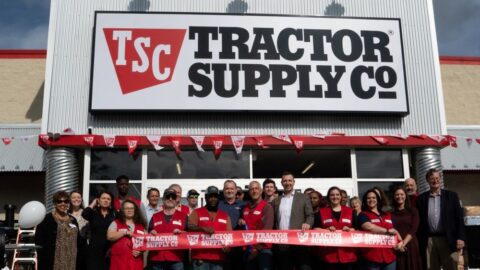Bigger was certainly better in the first half of this decade. Most chains were not only rolling out new locations as fast as the developers could build them, but many were also introducing bigger formats. As the economy has softened, the industry’s warts are beginning to show. Now some retailers are closing up unprofitable locations, and many are also re-evaluating whether they can justify the costs of the huge boxes they are operating.
The Field of Dreams era of “If You Build It, They Will Come,” is being replaced by smart retailers who are using predictive analytics across all areas of their business and formulating strategies around bottom line factors as much as top line goals. In this new age, the retailers that survive and thrive will be able to forecast just how many customers are likely to come after they build it and then have metrics established around the conversion rates, retention rates and sales per square feet performance they will need to achieve.
One of the most glaring examples of this shift in strategy from stacking the inventory high and wide to micro-managing sales performance is Circuit City. The company recently announced plans to open between 50 and 60 stores of its new concept called “The City” this fiscal year. The new format is about half the size of Circuit City’s traditional box and will narrow its inventory selection to focus on the best-selling items and equip sales associates with tablet PCs so that product and inventory information is immediately accessible.
In a recent interview with the Wall St. Journal, Circuit City’s CEO Philip Schoonover, pointed out that the new format will emphasize efficiency. “Typically, our stores are 35,000 square feet, and less than 18,000 of that is selling space. The new prototype is 20,000 and has 17,000 of selling space,” he told the Journal. “This fundamentally changes the economics. We can get higher revenue per square foot, higher-margin dollars per square foot, and we can find additional sites that weren’t necessarily available for our old box.”
PRECISION RETAILING
Coming off the recent holiday season, department stores are also taking a harder look at their footprint and merchandising mixes. For example, Dillard’s recently revealed plans to open 9 new stores that would measure 170,000 square feet compared to their older stores which stretched 200,000 square feet, with a merchandise plan that mirrors specialty stores and features more branded in-store boutiques.
The downsizing trend has also reached into the upscale specialty sector as well, with Tiffany’s announcing plans to test a new smaller-scale store this fall in Glendale, CA. The new 2,600-square-foot box will carry less high priced jewelry such as engagement rings and would focus more on the chain’ signature silver jewelry. Since Tiffany’s current base of 46 locations average over 7,000 square feet in size, analysts project that the new footprint could allow the chain to expand its base to 170 locations.
While other retailers are scaling back their store count and adapting their format to have a sharper focus on metrics like sales per square foot, one of best case studies for the benefits of precision retailing is Trader Joe’s. Although the boutique supermarket has been hugely popular with customers, the chain has resisted the temptation to roll out new stores too quickly, with its roster still at only 280 stores in 23 states. The retailer was profiled in a recent edition of Business Week, which estimated that the privately held chain registered $6.5 billion in sales. The Business Week article quoted Sandy Skorvan, who projected that Trader Joe’s is generating sales of approximately $1,300 per square foot, which is double the supermarket industry average, in large part due by focusing more on micro-managing its inventory and store format.












